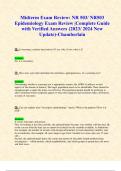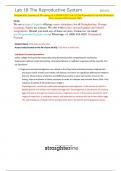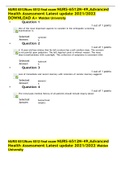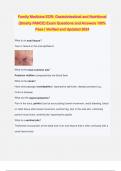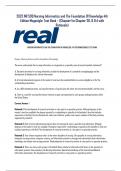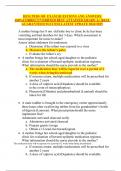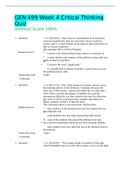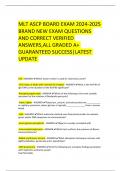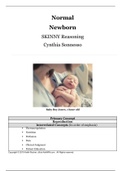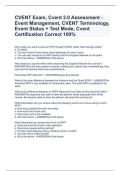Exam (elaborations)
Midterm Exam Review: NR 503/ NR503 Epidemiology Exam Review |Complete Guide with Verified Answers (2023/ 2024 New Update)-Chamberlain
- Course
- NR 503/ NR503 (NR503)
- Institution
- Chamberlain College Of Nursing
Midterm Exam Review: NR 503/ NR503 Epidemiology Exam Review |Complete Guide with Verified Answers (2023/ 2024 New Update)-Chamberlain Q: Is screening a tertiary intervention? If yes, why, if not, what is it? Answer: No, it is secondary. Q: How does a provider determine the usefuln...
[Show more]
